Today's Tidbit... Offensive Formations in 1955
Regular readers know I collect football-related advertising premiums and regularly use them in stories. Besides being inexpensive, they typically summarize the previous season, project the coming season, detail the upcoming schedule, and add bonus information of various sorts. Overall, they provide point-in-time summaries of the state of football for a given year, and many offer great commercial art of the period.
Most advertising premiums were small giveaway brochures given to any customer or neighborhood kid who walked in the door. Occasionally, however, companies produced full-fledged premiums that resembled books rather than brochures. That was the case in 1955 when Massachusetts Mutual Life Insurance created the 90-pager Everybody's Football. It was substantial and expensive enough that Everybody's Football was given only to solid customers or as a sales closer. What made the document different is that it provided a primer on football that included a glossary of terms and details on offensive and defensive play and strategies.
The book contains several sections worth reviewing, and today we'll look at some offensive formations in use in 1955. It's a nice overview that provides brief descriptions of key offenses and formations, all in one place.
The summary includes the Single Wing and Notre Dame Box or Shift that were past or approaching their expiration date by 1955, but many football fans in 1955 would have cut their teeth on those offenses, so they offered a nice comparison to the newer offenses profiled.
The first offense covered was the Single Wing, Pop Warner's creation. Like the Notre Dame Box, it resulted from a 1910 rule change that allowed the player receiving the snap to run the ball anywhere along the line. Jim Thorpe was the prototype triple-threat tailback who could run, pass, and kick. Since defenses focused on the tailback running or passing to the strong side, misdirection to the unbalanced side was critical to many Single Wing offenses.
The Notre Dame Box or Shift comes next. Like the Single Wing, the Notre Dame Box or Shift became feasible due to the 1910 rule change, but tended to use a balanced line, pre-snap shift, and spread the ball around more than the Single Wing, which helped if you didn’t have a triple threat. You could do well if you had backs with complementary skills.
The Double Wing also originated with Pop Warner. He featured it during his time at Stanford, with Ernie Nevers being his premier fullback. The wings aligned inside or outside the ends. Either position allowed them to help block on the edge or get into pass routes, assuming you were willing to throw the ball.
The Modern T formation arrived in 1940 with both the Chicago Bears and Stanford, after Clark Shaughnessy moved to the latter from UChicago. It quickly became the dominant offense across football and remained so for decades. While the quarterback was primarily a blocker in the Single Wing and Notre Dame Box, he was the focus of the Modern T. One of the halfbacks often went in motion, and, by 1955, he often aligned outside as a flanker, especially on passing-oriented teams.
Two variations of the T that had lots of influence were the Split T and the Wing T. The Split T remains one of the most influential offenses in football history since it introduced option football to the game. The Wing T married the Single Wing and T by using a QB under center, offering the quick dive of the original T, a sweep to the backside halfback, and potential misdirection with the Wing, as well as the quarterback waggle or bootleg to keep defenses honest.
Everybody's Football covered several other offenses and formations primarily used for passing. We’ll take a look at those in the next Tidbit.
Football Archaeology is reader-supported. Click here to buy one of my books, donate, or otherwise support the site.


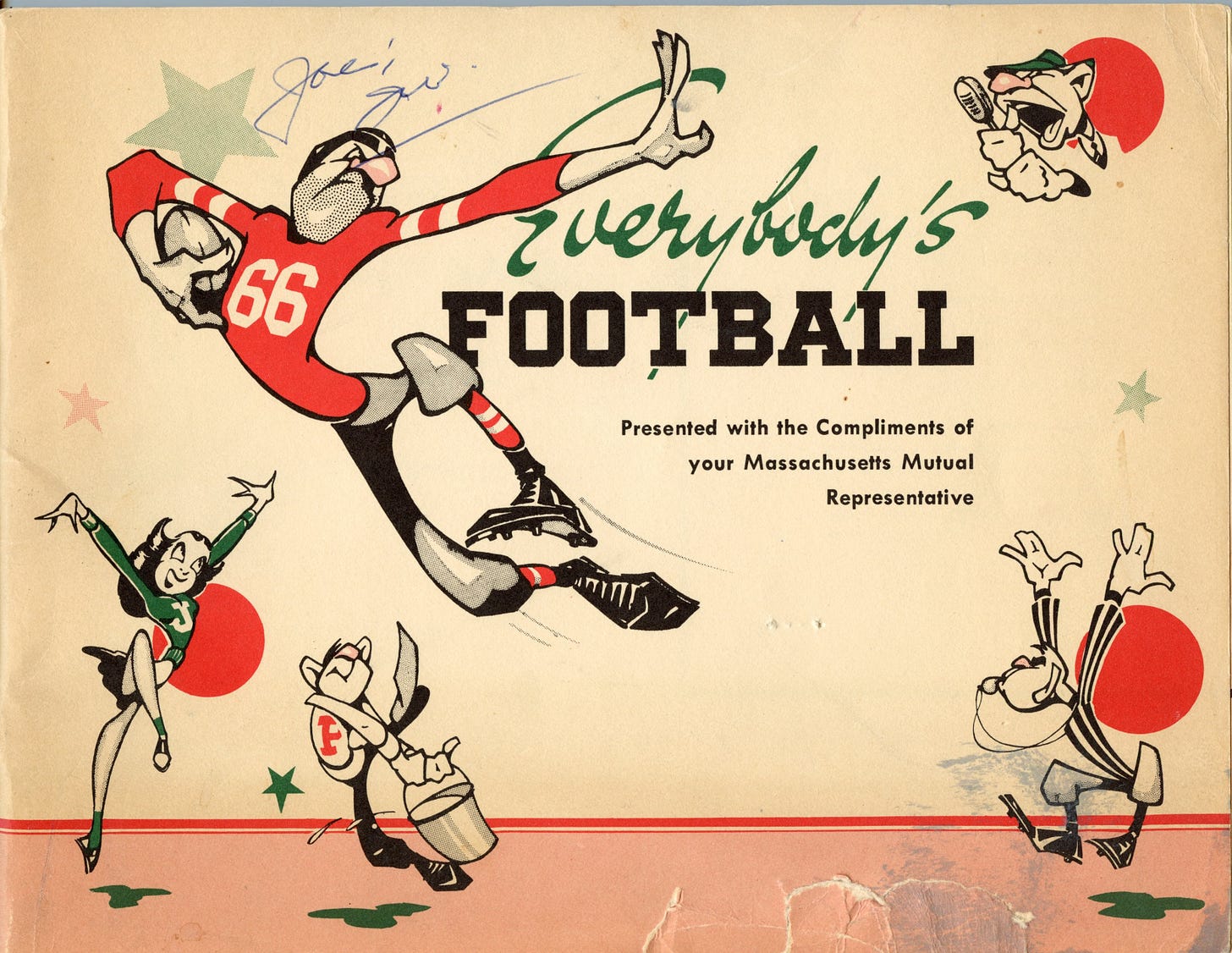
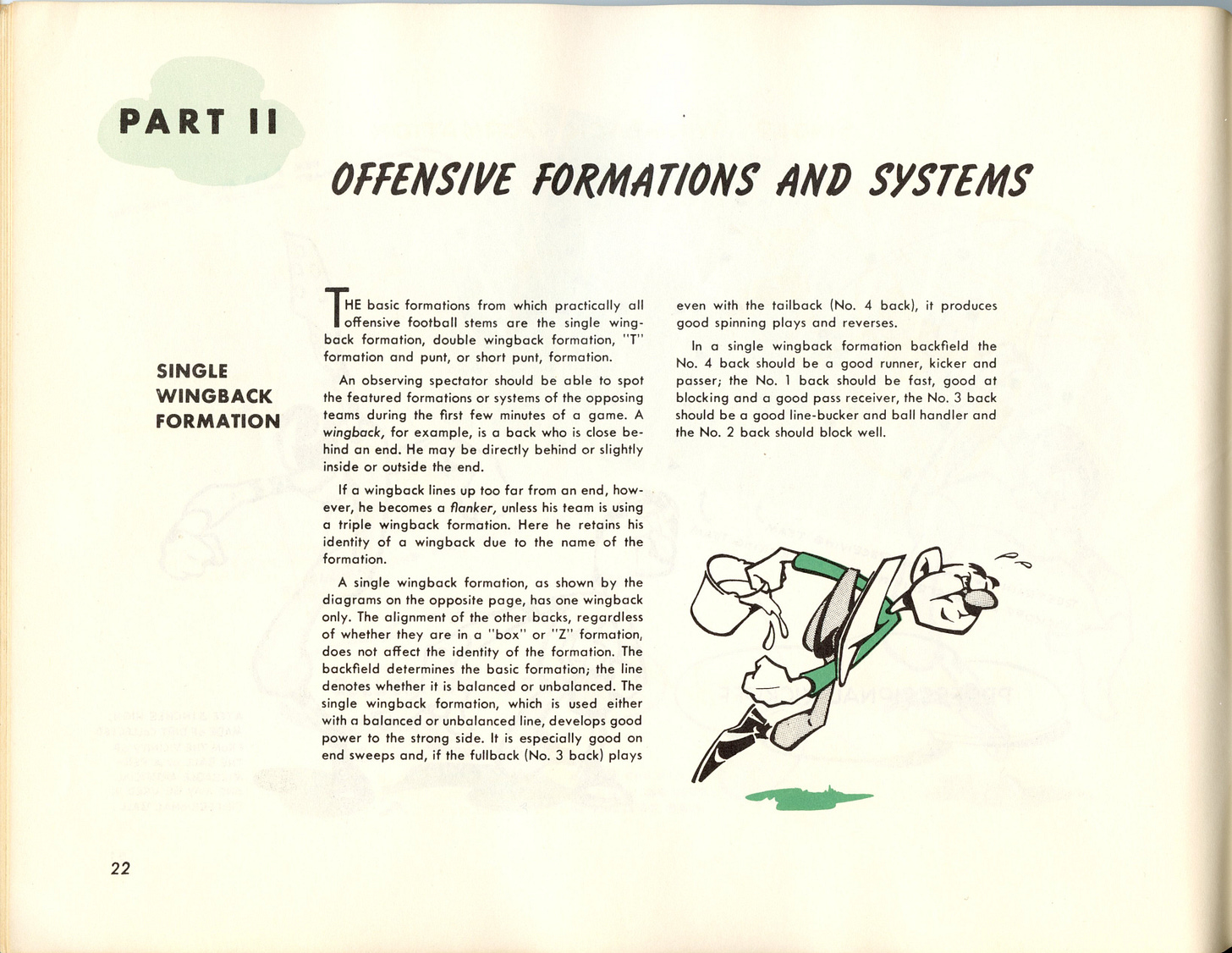
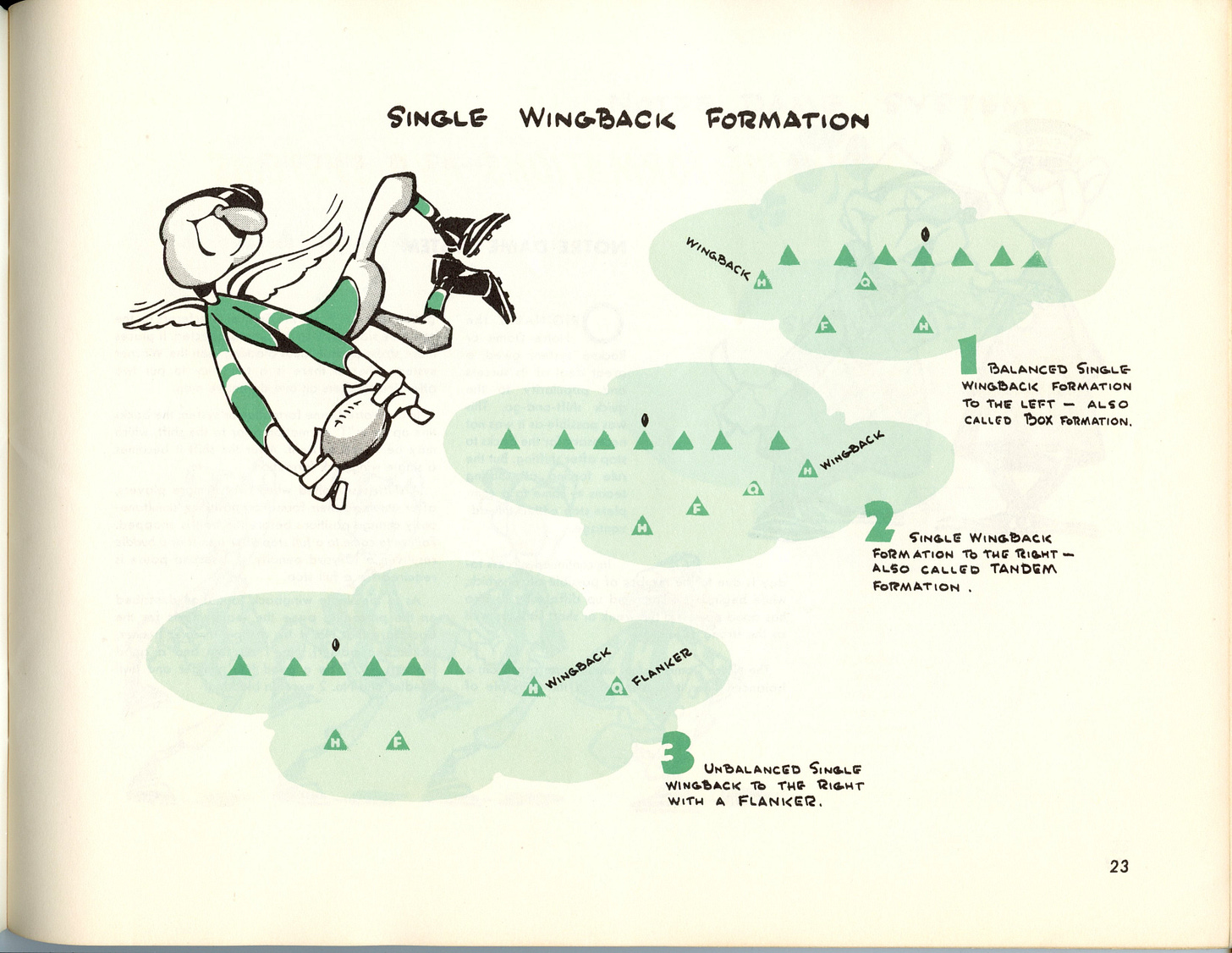
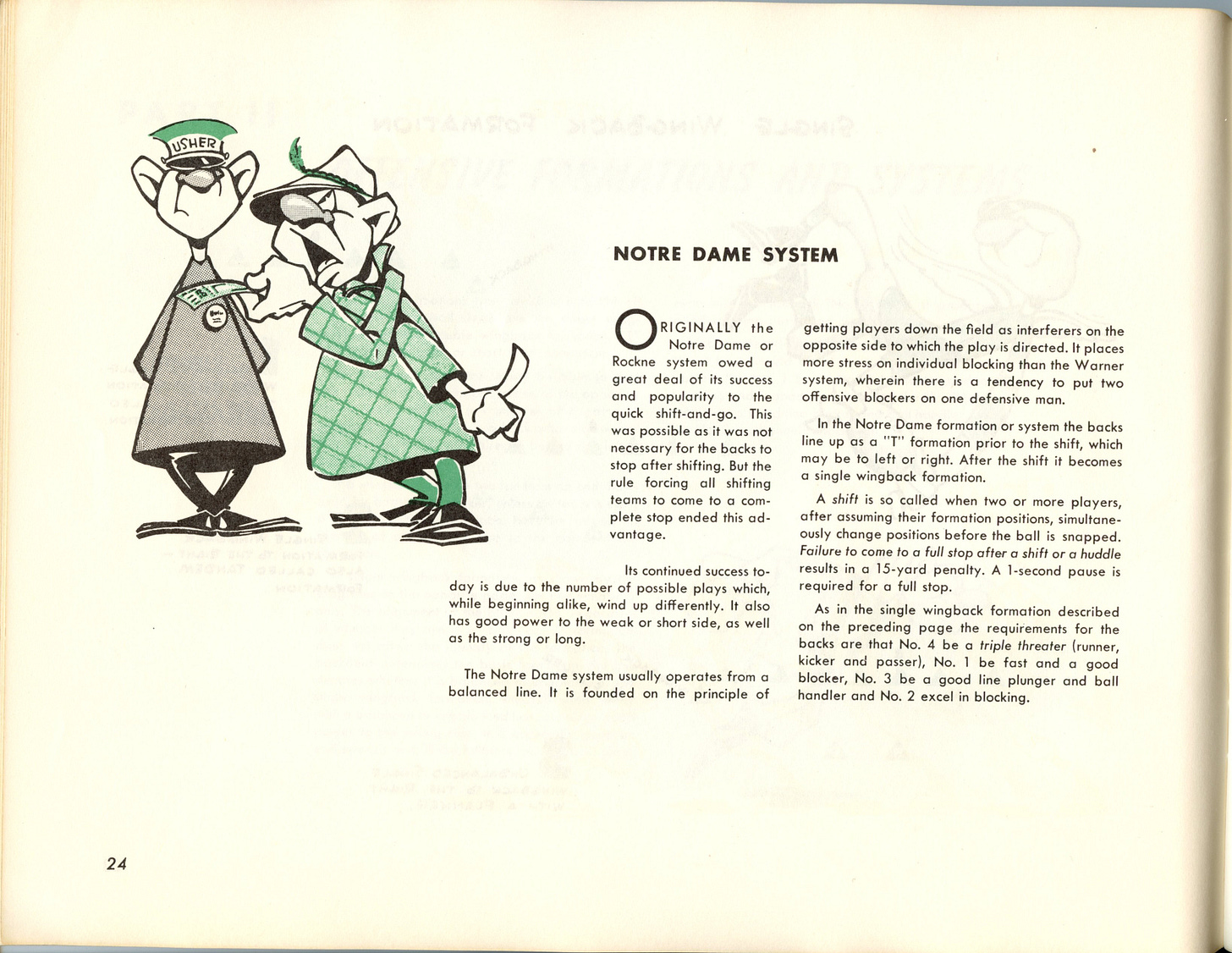
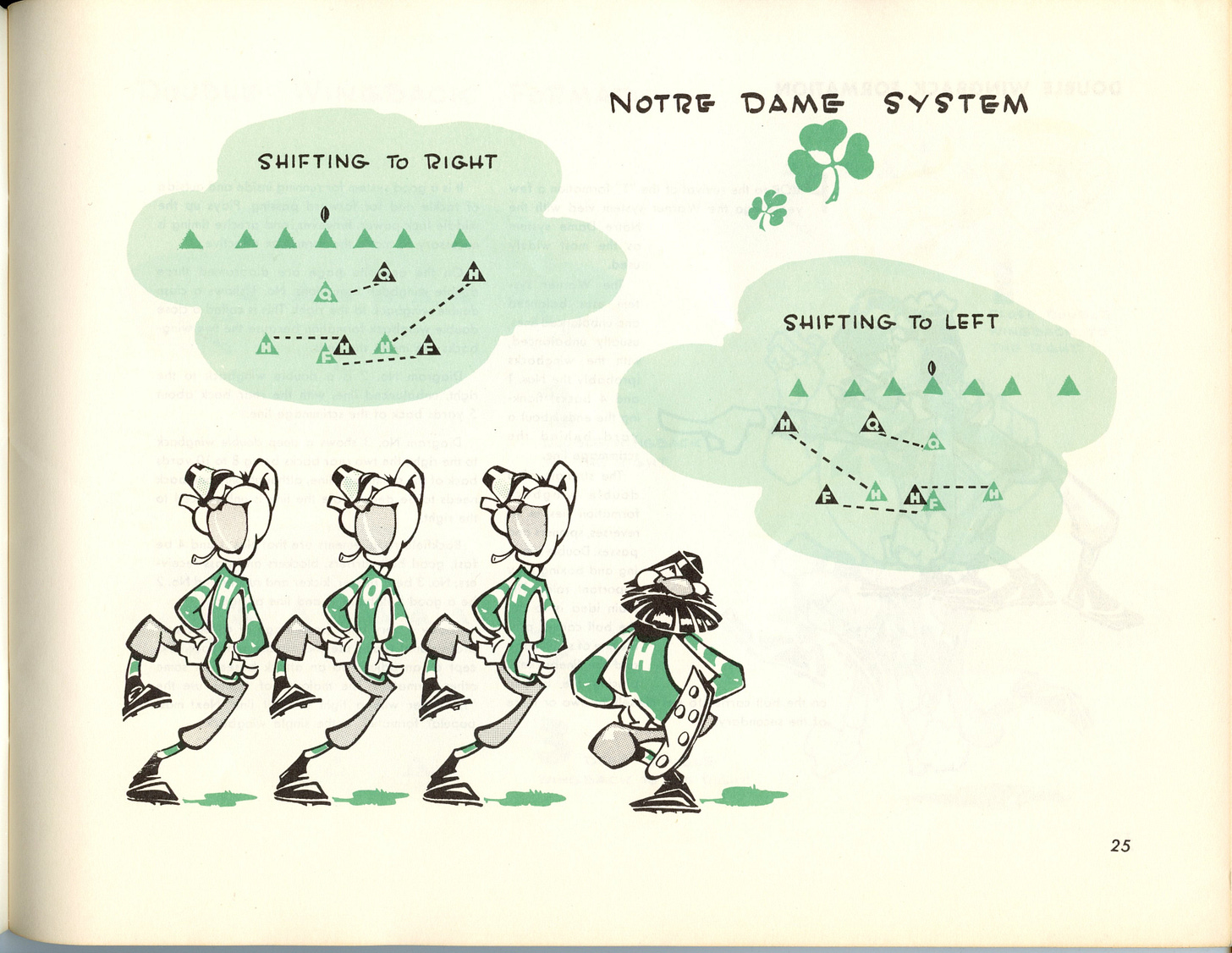
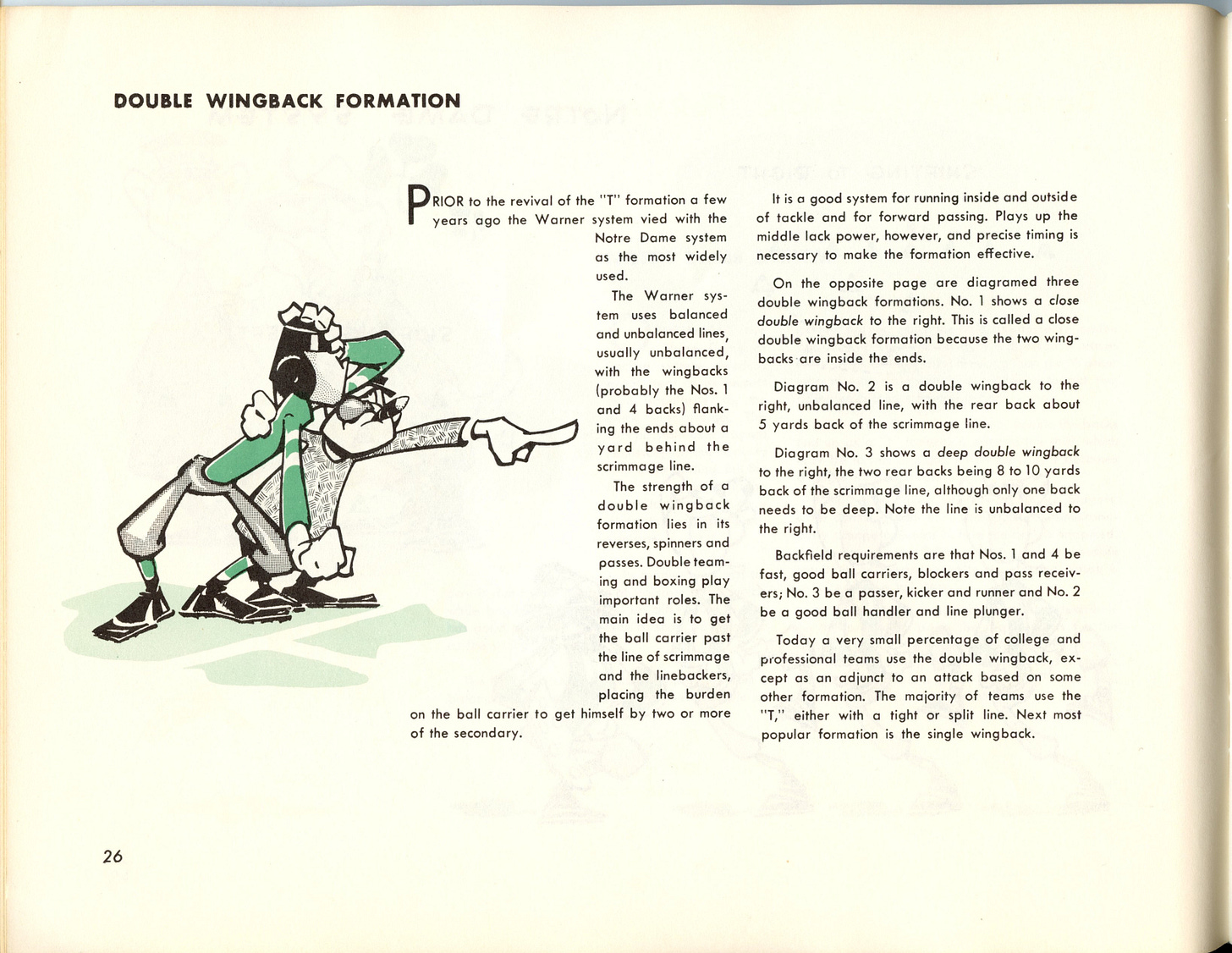
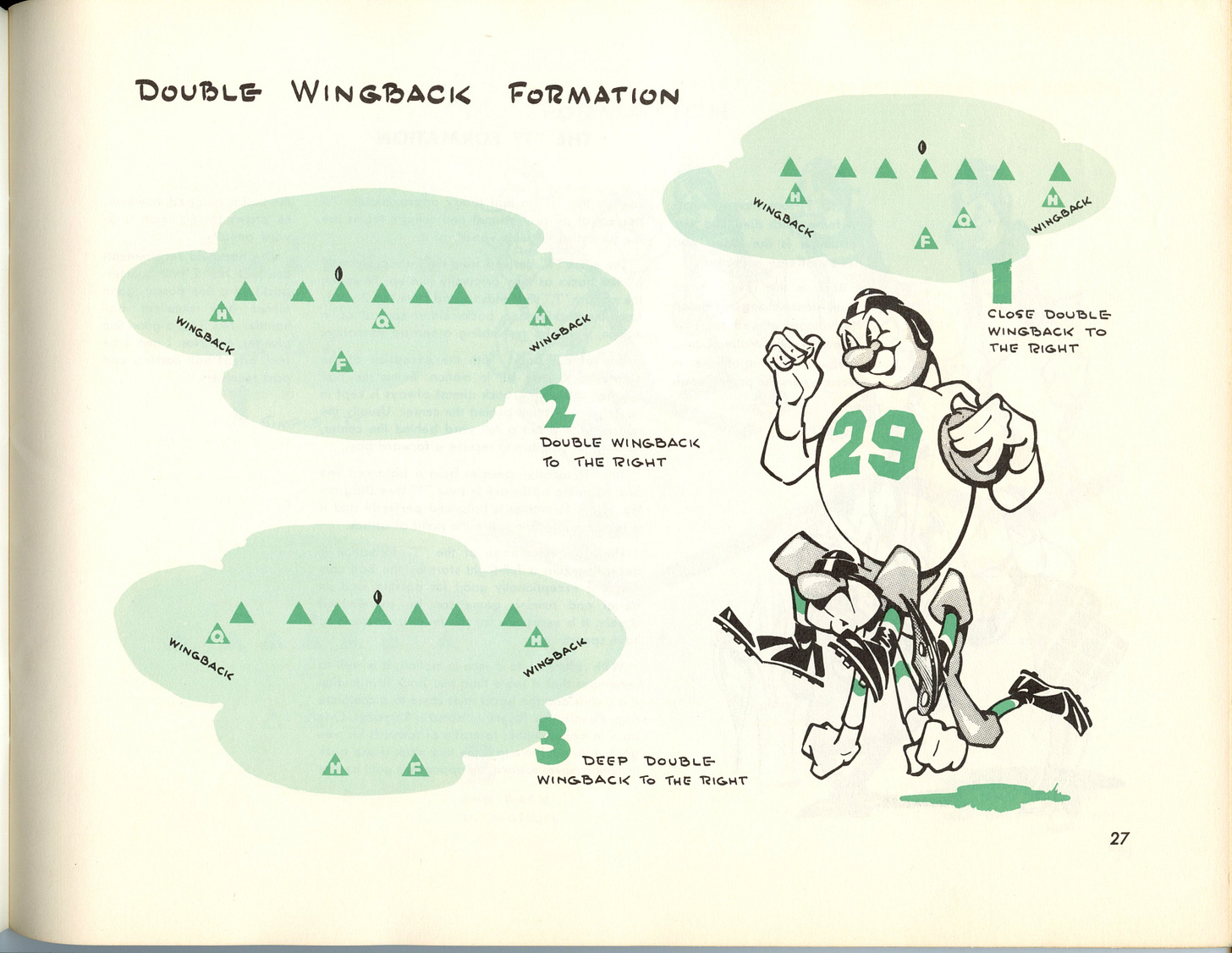
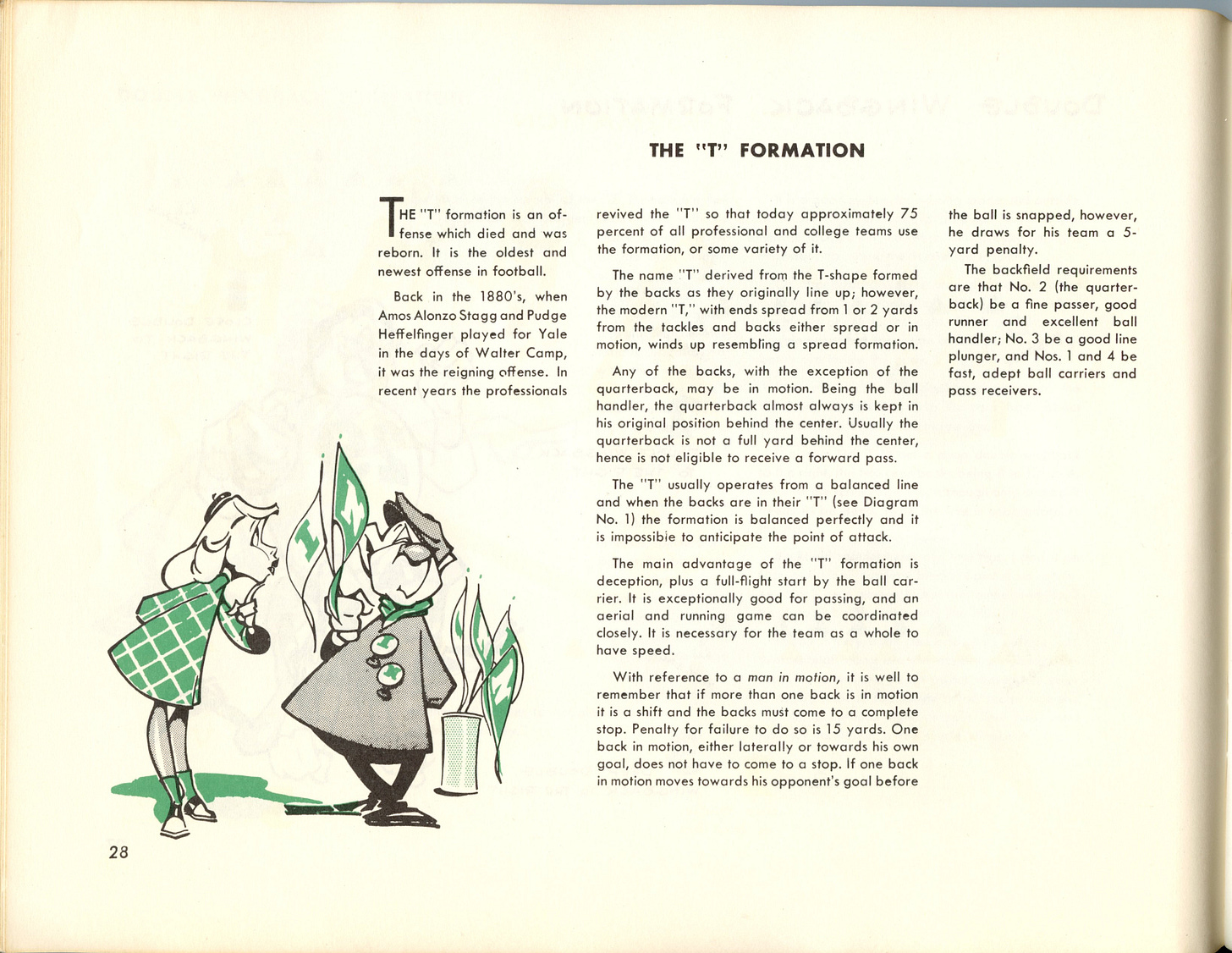
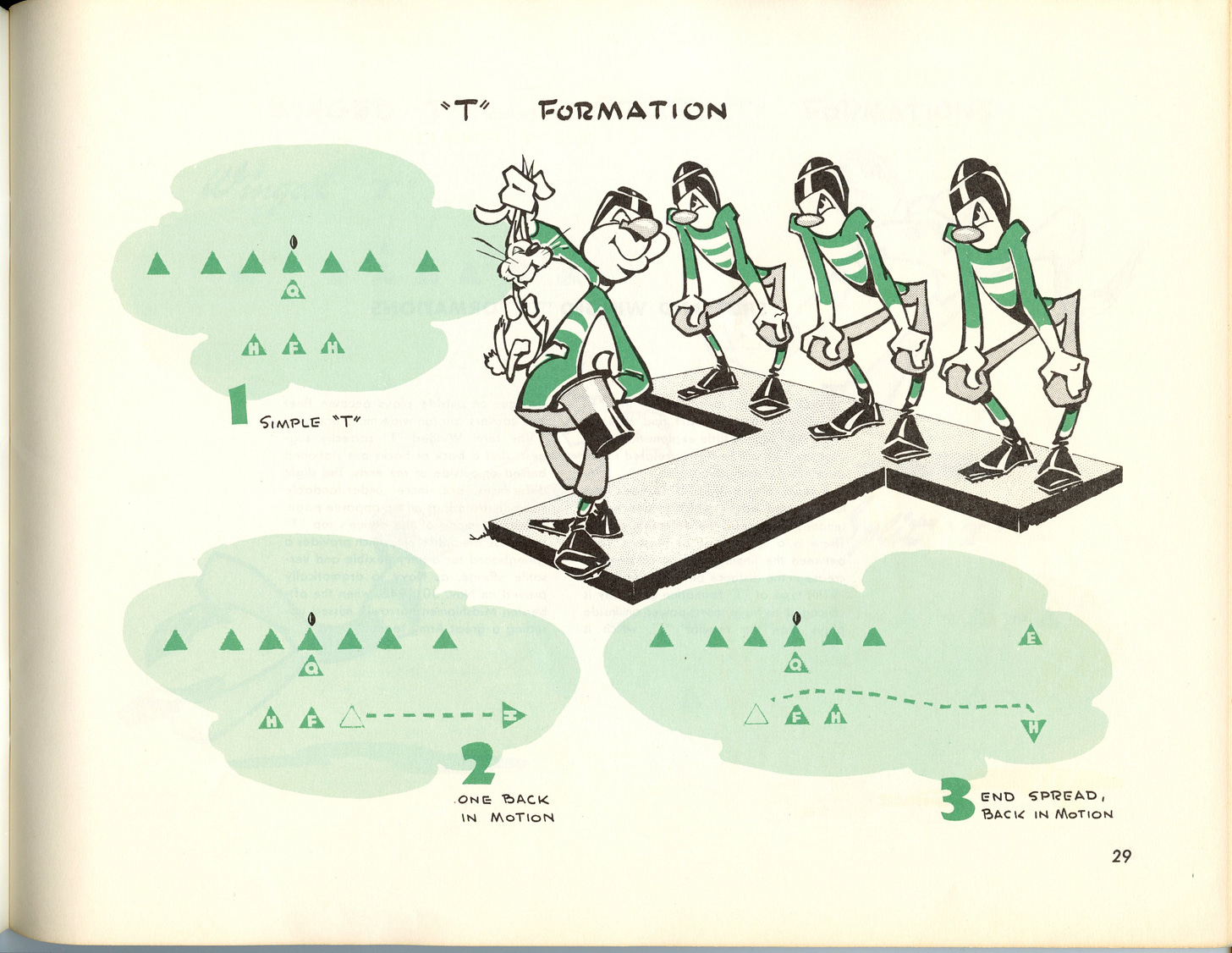
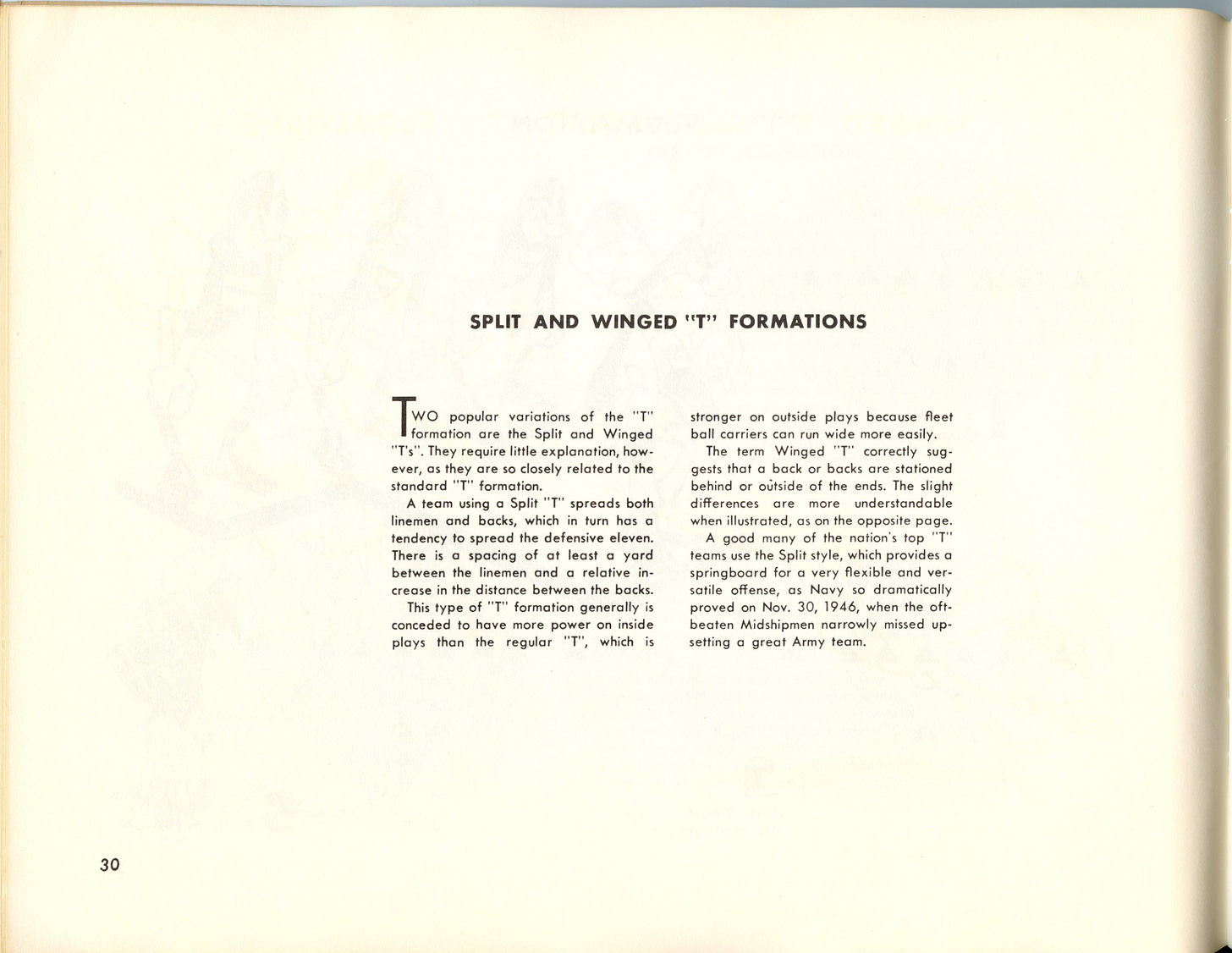

Love it! Looking forward to the next post!